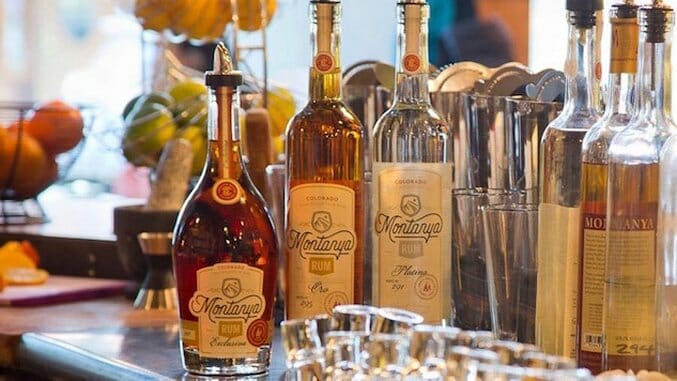Rum, Reinvented: Montanya Distillers
Photos via Montanya Rum
Everything changed for Karen Hoskin while she was traveling in India. Not because she fell under the spell of a yogi or went on a month-long pilgrimage to the country’s holy sites. It was a far simpler activity that proved to be just as transcendent. She ordered a glass of Old Monk rum in the beach town of Goa and tasting real rum for the first time. The spirit, a vestige of the country’s British era, has been made in India since 1954, blended and aged for at least eight years to imbue the dark spirit with a complex, deep flavor that was a far cry from the sugary-sweet rums Karen had encountered elsewhere. She could drink it straight—no need for the excess calories and saccharin tastes of a mixer—and the next day she wasn’t the least bit hung over.
“I was just the unofficial rum ambassador for years,” she says after that first encounter.
But it wasn’t until she went to Guatemala years later that her love of the spirit evolved from adoration to a life-changing love affair. There she visited the home of Ron Zacapa Centenario, one of the Caribbean’s premium rums. Like many other distilleries in the region, they followed the practice of high-elevation rum distilling, storing the barrels at 7,500 feet above sea level on the upper slopes of Guatemala’s volcanic mountains to take advantage of the variable temperature and climate conditions at higher elevations. Another misperception, that rum is an island spirit, was shattered.
And Karen, who worked as a graphic designer in Silverton, Colorado, at the time, knew where she could easily access some serious high-alpine terrain. She’d visited Guatemala in the spring of 2008. By November she’d let all her clients go and, with the help of her husband Brice, opened the Montanya Rum Distillery.
The timing proved serendipitous. The country was already riding a wave of affection for craft beer, with Colorado leading the pack of informed, inspired consumers interested not only in the taste of something new, but also in the pioneer DIY spirit behind these smaller-scale artisans.
Craft spirits naturally got swept up in that groundswell. By August 2011, their operation had outgrown their 800-square-foot facility in Silverton, so they moved deeper into Colorado’s iconic mountains, settling in the snow globe-perfect ski town of Crested Butte.
Today their operations stretch across two facilities, covering 5,200 square feet, including the central distillery and tasting room as well as a warehouse that serves ground zero for their distribution operation, which covers 42 states and seven countries.

Yet even with this meteoric rise, the central focus on quality remains.
“Of the distilleries in the United States, we’re one of the most hand-crafted,” says Karen.
Montanya’s rums are distilled in manually-operated alembic copper pot stills from Portugal, which glow a tantalizing bronze color and are shaped like Aladdin’s lamp, topped with a graceful swan neck. They look like something you’d find in the laboratory from Fantasia.
-

-

-

-

-

-

-

-

-

-

-

-

-

-

-

-

-

-

-

-

-

-

-

-

-

-

-

-

-

-

-

-

-

-

-

-

-

-

-

-









































